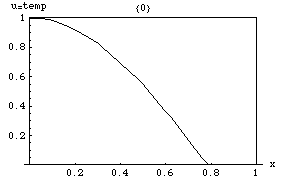 Image via Wikipedia
Image via WikipediaMathematical finance is a field of applied mathematics, concerned with financial markets. The subject has a close relationship with the discipline of financial economics, which is concerned with much of the underlying theory. Generally, mathematical finance will derive and extend the mathematical or numerical models suggested by financial economics. Thus, for example, while a financial economist might study the structural reasons why a company may have a certain share price, a financial mathematician may take the share price as a given, and attempt to use stochastic calculus to obtain the fair value of derivatives of the stock (see: Valuation of options).
In terms of practice, mathematical finance also overlaps heavily with the field of computational finance (also known as financial engineering). Arguably, these are largely synonymous, although the latter focuses on application, while the former focuses on modeling and derivation (see: Quantitative analyst). The fundamental theorem of arbitrage-free pricing is one of the key theorems in mathematical finance. Many universities around the world now offer degree and research programs in mathematical finance; see Master of Mathematical Finance.
Contents [hide]
1 History: Q versus P
1.1 Derivatives pricing: the Q world
1.2 Risk and portfolio management: the P world
2 Criticism
3 Mathematical finance articles
3.1 Mathematical tools
3.2 Derivatives pricing
4 See also
5 Notes
6 References
7 External links
[edit]History: Q versus P
There exist two separate branches of finance that require advanced quantitative techniques: derivatives pricing on the one hand, and risk and portfolio management on the other hand. One of the main differences is that they use different probabilities, namely the risk-neutral probability, denoted by "Q", and the actual probability, denoted by "P".
[edit]Derivatives pricing: the Q world
The goal of derivatives pricing is to determine the fair price of a given security in terms of more liquid securities whose price is determined by the law of supply and demand. Examples of securities being priced are plain vanilla and exotic options, convertible bonds, etc. Once a fair price has been determined, the sell-side trader can make a market on the security. Therefore, derivatives pricing is a complex "extrapolation" exercise to define the current market value of a security, which is then used by the sell-side community.
Derivatives pricing: the Q world
Goal
"extrapolate the present"
Environment
risk-neutral probability
Processes
continuous-time martingales
Dimension
low
Tools
Ito calculus, PDE’s
Challenges
calibration
Business
sell-side
Quantitative derivatives pricing was initiated by Louis Bachelier in The Theory of Speculation (published 1900), with the introduction of the most basic and most influential of processes, the Brownian motion, and its applications to the pricing of options. However, Bachelier's work hardly caught any attention outside academia.
Main article: Black–Scholes
The theory remained dormant until Fischer Black and Myron Scholes, along with fundamental contributions by Robert C. Merton, applied the second most influential process, the geometric Brownian motion, to option pricing. For this M. Scholes and R. Merton were awarded the 1997 Nobel Memorial Prize in Economic Sciences. Black was ineligible for the prize because of his death in 1995.
The next important step was the fundamental theorem of asset pricing by Harrison and Pliska (1981), according to which the suitably normalized current price P0 of a security is arbitrage-free, and thus truly fair, only if there exists a stochastic process Pt with constant expected value which describes its future evolution:
(1 )
A process satisfying (1) is called a "martingale". A martingale does not reward risk. Thus the probability of the normalized security price process is called "risk-neutral" and is typically denoted by the blackboard font letter "".
The relationship (1) must hold for all times t: therefore the processes used for derivatives pricing are naturally set in continuous time.
The quants who operate in the Q world of derivatives pricing are specialists with deep knowledge of the specific products they model.
Securities are priced individually, and thus the problems in the Q world are low-dimensional in nature. Calibration is one of the main challenges of the Q world: once a continuous-time parametric process has been calibrated to a set of traded securities through a relationship such as (1), a similar relationship is used to define the price of new derivatives.
The main quantitative tools necessary to handle continuous-time Q-processes are Ito’s stochastic calculus and partial differential equations (PDE’s).
[edit]Risk and portfolio management: the P world
Risk and portfolio management aims at modelling the probability distribution of the market prices of all the securities at a given future investment horizon.
This "real" probability distribution of the market prices is typically denoted by the blackboard font letter "", as opposed to the "risk-neutral" probability "" used in derivatives pricing.
Based on the P distribution, the buy-side community takes decisions on which securities to purchase in order to improve the prospective profit-and-loss profile of their positions considered as a portfolio.



